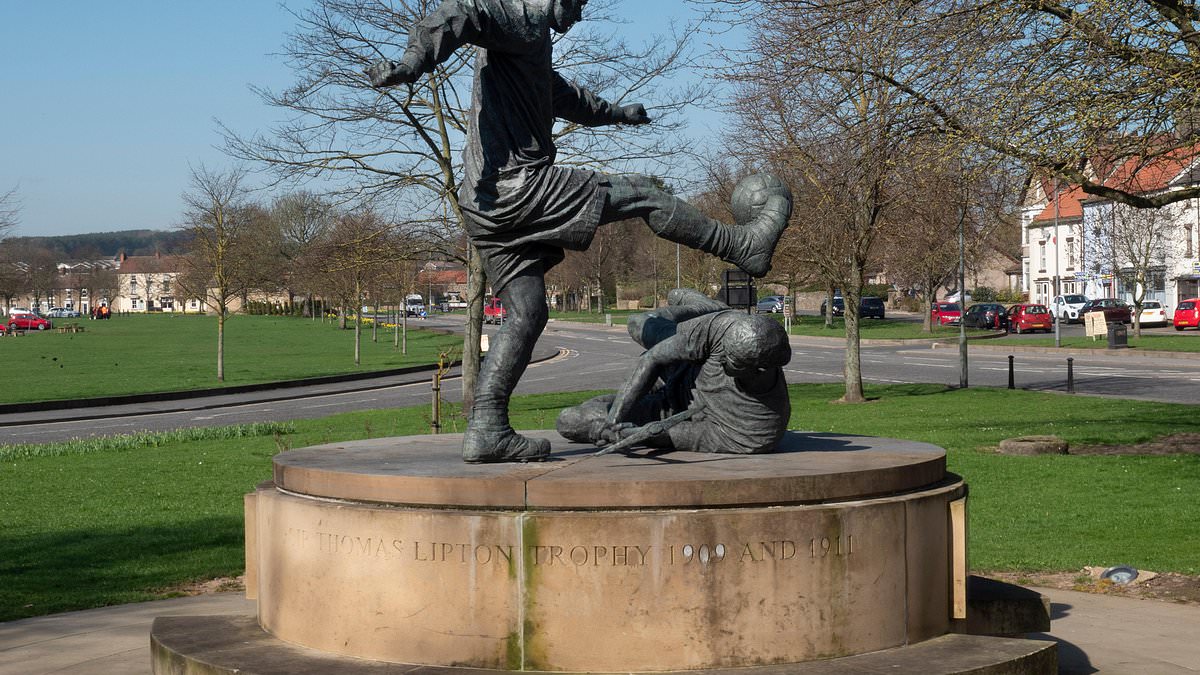West Auckland Football Club, of the English Northern League, did once defeat Juventus, although it was long before the Italian team were the soccer giants they are today.
Scottish tea magnate Sir Thomas Lipton had publicised the name of his company in the U.S. by taking part in an America’s Cup yacht race in 1899, the first of his five attempts in the competition.
He had also sponsored a football tournament between Uruguayan and Argentinian teams for a South American trophy called the Copa Lipton in 1905. His next idea was to promote his brand of tea with a European football tournament to be held in Turin in 1909.
West Auckland, an amateur team of miners, were invited to take part, for reasons which are unclear. The men, most of whom had never left County Durham before, sold their own belongings to fund their journey to Turin.
Their opponents in the competition included German, Swiss and Italian teams. Despite being underdogs, West Auckland efficiently demolished all opposition, winning the final 2-0 against Swiss side Winterthur.
The team were accorded a rousing welcome fit for heroes when they returned home.
Two years later, the miners returned to defend their title, defeating Zurich 2-0 in the semifinals before going on to score four goals in the first 15 minutes in the final against Juventus. They eventually ran out 6-1 winners.
The tournament was hardly an early version of the World Cup, as it has sometimes been billed, and the Juventus team of those days was far from having the mighty stature it enjoys today, but nevertheless the miners’ achievement in one of the earliest international football tournaments was remarkable, and a statue in the town rightly marks their success.
In 1982, the film The World Cup: A Captain’s Tale, starring Richard Griffiths, Dennis Waterman and Nigel Hawthorne, told the heartwarming story to a new audience.Regrettably, the Lipton trophy was stolen in 1994 and never recovered, but a replica is now on display.
Ian MacDonald, Billericay, Essex
Question: Why is it that you can’t use metal in a microwave, yet the appliance itself is lined with it?
Q: Was the guillotine created as a compassionate way to execute a person?
Wendy Thompson, Berwick-upon-Tweed, Northumberland
Q: Why did James Ussher, who calculated the date of creation as 4,004 BC, choose 5 BC as Jesus’s birth year?
Mr G. S. Murphy, London N10
Q: I have a 1939 variety hall poster featuring the act ‘Velda and Vann’. Who were they?
Andrew Grimshaw, Bedford
The metal lining and a conductive mesh in the door act as a reflective screen to keep the microwaves in the oven, where they are needed to cook the food. They also prevent microwaves escaping from the oven and injuring the user.
A metal dish, or aluminium foil around the food, will act as a reflective screen, stopping the microwaves penetrating the food and consequently preventing it from being cooked.
What is worse is that any metal object placed in the oven can cause a build-up of charged electrons. This may produce high voltages, resulting in sparks, as well as wasting energy, hindering cooking and possibly damaging the magnetron that provides the microwave energy.
It’s not just metal that can cause a problem. I once tried to heat up some food in a glass dish. The dish had a decorative coloured frosting effect around the rim, which turned out to be a metal oxide — a conductive one. When I switched on the microwave, sparks danced around the rim. I turned it off immediately.
As previously stated, microwaves inside the oven are reflected off the metal walls and the mesh in the door.
Because of multiple reflections and different path lengths, some of the reflected microwaves will reinforce each other, producing hot spots in the oven, while others will cancel, producing cold spots.
These days, even cooking is facilitated by mounting the food on a rotating turntable so that every part passes through both hot and cold spots.
Denis Sharp, Littlehampton, West Sussex
Question: What is considered to be the oldest proverb?
The Sumerian civilisation developed writing around 3,500 BC, when they began making markings on clay tablets in a script known as cuneiform. They created laws, myths and hundreds of everyday proverbs.
The oldest written proverbs were discovered on a clay tablet at Abu Salabikh, an ancient site around 100 miles southeast of Baghdad, Iraq,in 1965. The tablet, now housed in the Iraq Museum, has a number ofproverbs that would be quiterecognisable today.
For instance: ‘When (you) wipe out grass, it sprouts (again)’, equates to ‘Ill weeds grow apace’; ‘Two men plough a field with two minds’is similar to ‘Two men of a tradeseldom agree’; and ‘He who has something desires something’ is synonymous with the saying ‘More wants more.’
Mark Smith, Brighton
